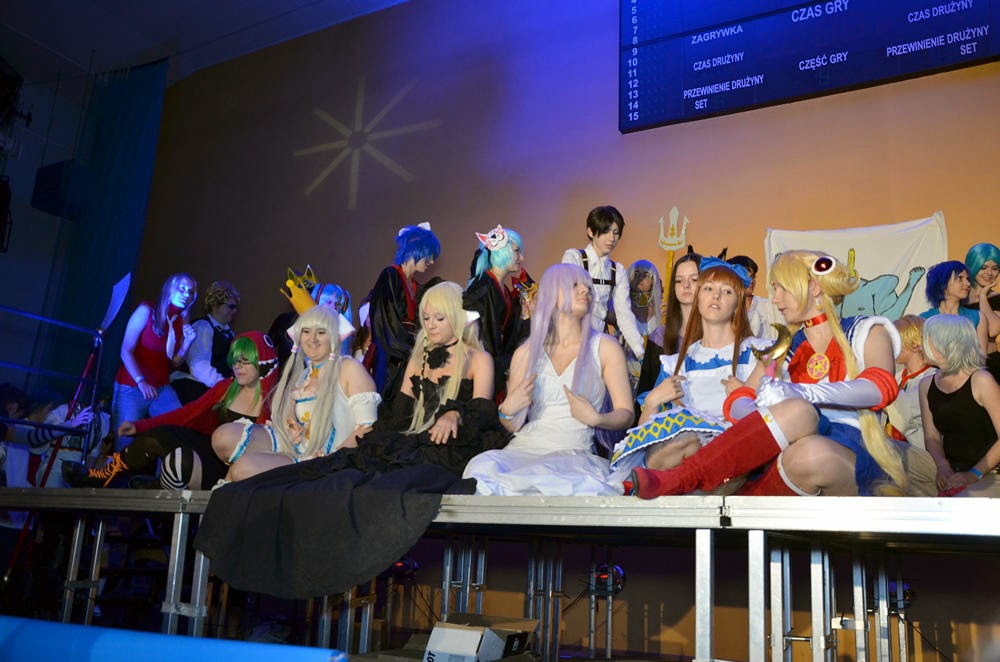Fan
conventions
You've
probably heard about these, like the world famous Comic-Con or if
you're more into Japanese popular culture – Anime Expo or
Japan Expo. Maybe you've been at one. Conventions
are events that
gather people who share similar interest, be it fantasy genre, comic
books, manga and anime (or Japanese culture in general) or television
series and movies. The most popular conventions in our country center
around the first three subjects and these are the ones I'd like to
talk about.
Usually
they're organized annually, often around the same date and in the
same location, but there are exceptions. The oldest and one of most
popular Polish fantasy conventions, Polcon, takes place in a
different city every year. Conventions
last two or three days (which usually corresponds with weekends),
sometimes only one day and sometimes they're longer. Fans, both local
and from around the whole country often come earlier, before the
opening, to save a place in a queue that can later grow into a huge
size. After some time, they get inside the building called a
conplace. A conplace may be a school building, a hotel, a stadium, a
cultural center or a specifically built for this purpose, convention/
conference center.
A
queue in front of Atlas Arena, Międzynarodowy Festiwal Komiksu in
Łódź, 2014
While
at a convention you may participate in a wide array of activities.
Firstly, there are lectures (given both by amateurs and professionals
alike) on various topics. Of course the subject of these
lectures depends on the theme of the
convention, but a lot of them will present
a specific
comic book or anime series, certain trope from culture and history.
You can discuss works
of a certain author or simply, meet
him/her
and talk about their work
experience, ask them questions personally. You can also take part in
contests and win prizes ranging from books, gadgets to
the convention’s currency (e.g.
pyrfunty at Pyrkon) which you can later exchange for something you
like. Besides, frequently there are game rooms - sections where you
can sit down in front of a computer or a console and test a game out,
or simply have fun with friends.
If
you're at anime or fantasy
convention, you'll sooner or later meet a person wearing a costume.
That person, a cosplayer, impersonates a character from a popular
culture (a TV series, a video game, a comic book etc.). There are
special contests organized for such people in which the best cosplay
is chosen.
Cosplayers,
notice the scene is in a school gym, Animatsuri 2013
At
every convention there is also a section dedicated to shop stands
where you may buy stuff you probably won't find anywhere else and
maybe even get a bargain. Among these shops you can spot artists and
craftsmen who sell their artbooks, art prints or hand-made jewelry.
Some of them will give out autographs, though at larger events the
process of signing autographs can be organized, like at MFK in Łódź
where you need a ticket with a number, otherwise you may be asked to
leave the queue (it depends
on an author's decision).
Fan
convetions are also a great opportunity for companies and publishers
to promote their products. For example, while at Międzynarodowy
Festiwal Komiksu in Łódź, I had a chance to play around with Wacom
Cintiq tablet (something
I missed at Pyrkon earlier).
Artists'
stands, also a school gym
Shop
stands at Pyrkon 2013, Poznań International Fair
Last
but not least, you can meet people who have the same interests as
you! Fan conventions are full of interesting, sometimes strange or
even outright crazy people. While I'm aware there are always some
downsides of such events, I still
think it's worth taking part.
Questions:
Have
you ever been at a convention? If yes, what kind
of? Did you like it?
What
do you think of this kind of events?
Sources:





%2B(1).jpg)
.jpg)
.jpg)

.jpg)
.jpg)
.jpg)

.jpg)